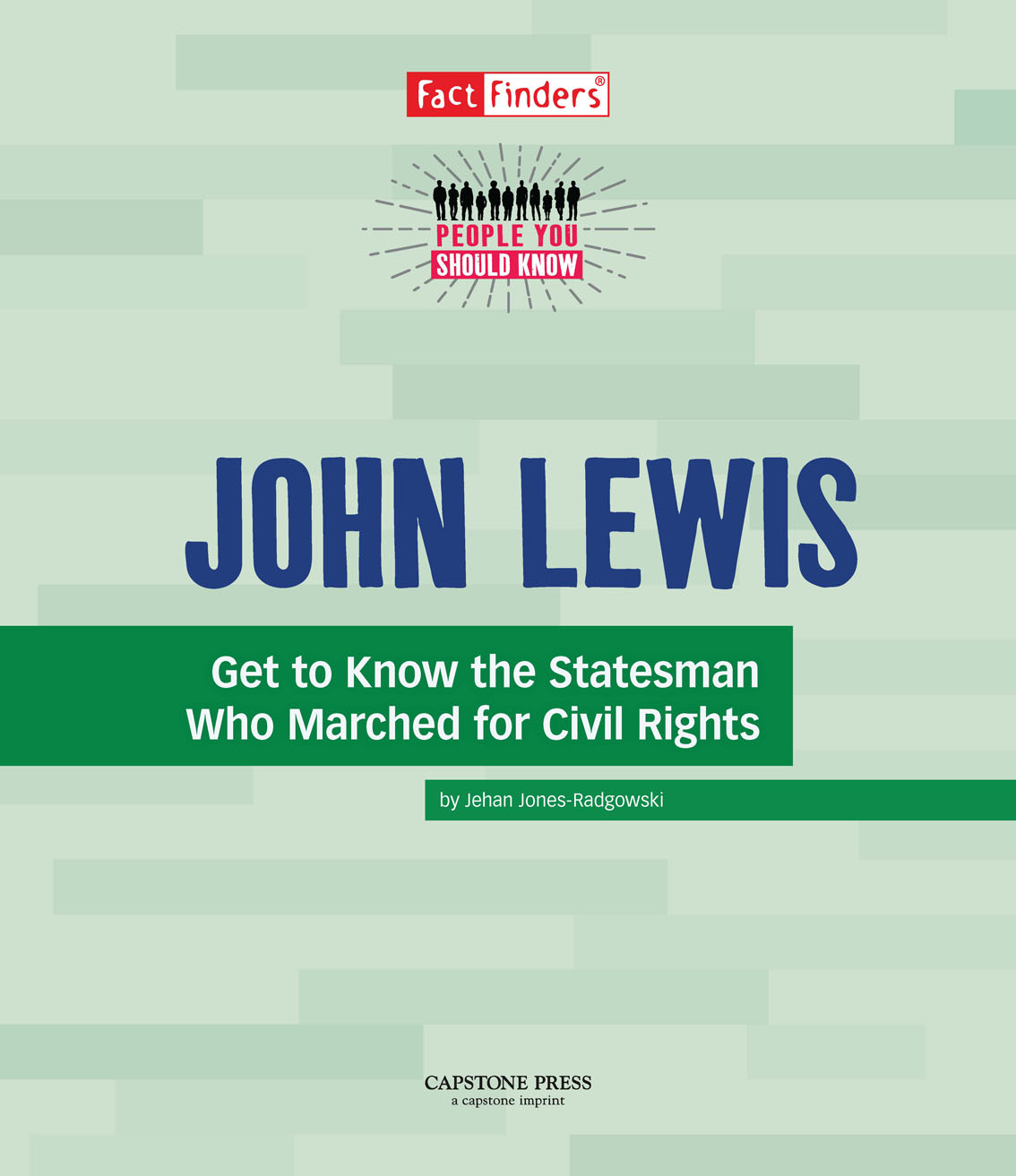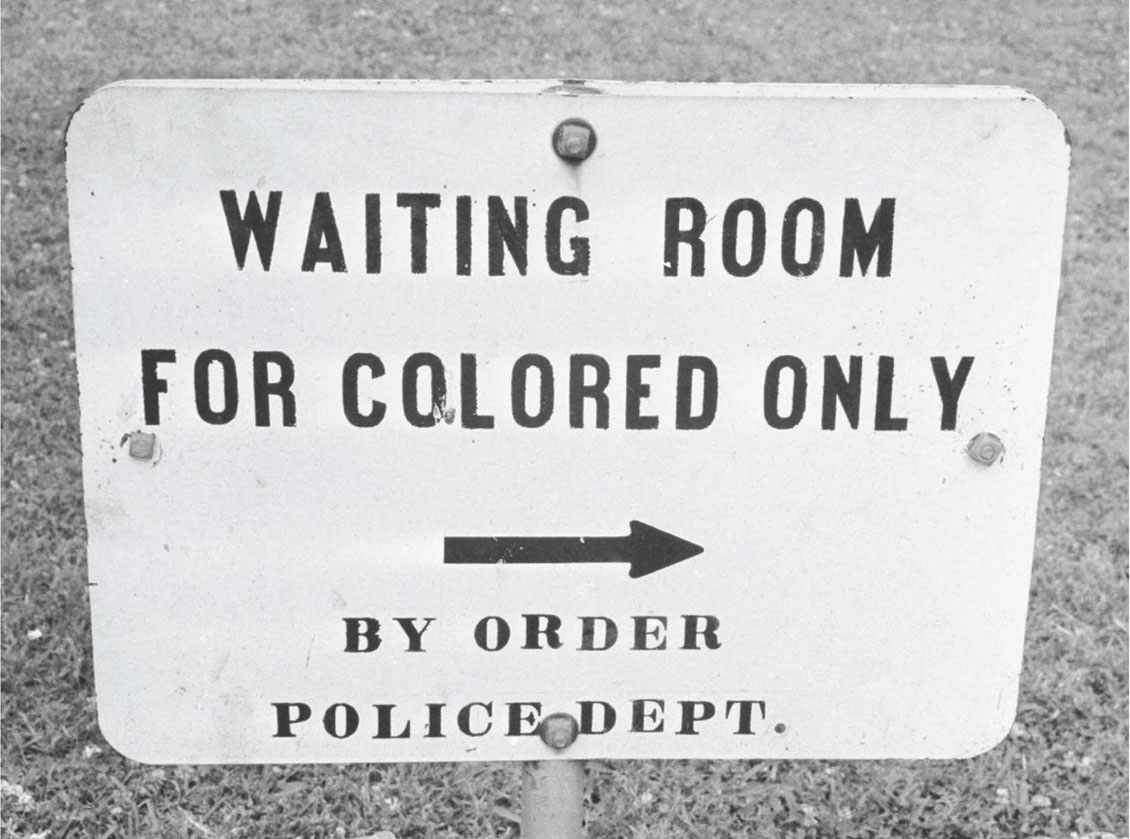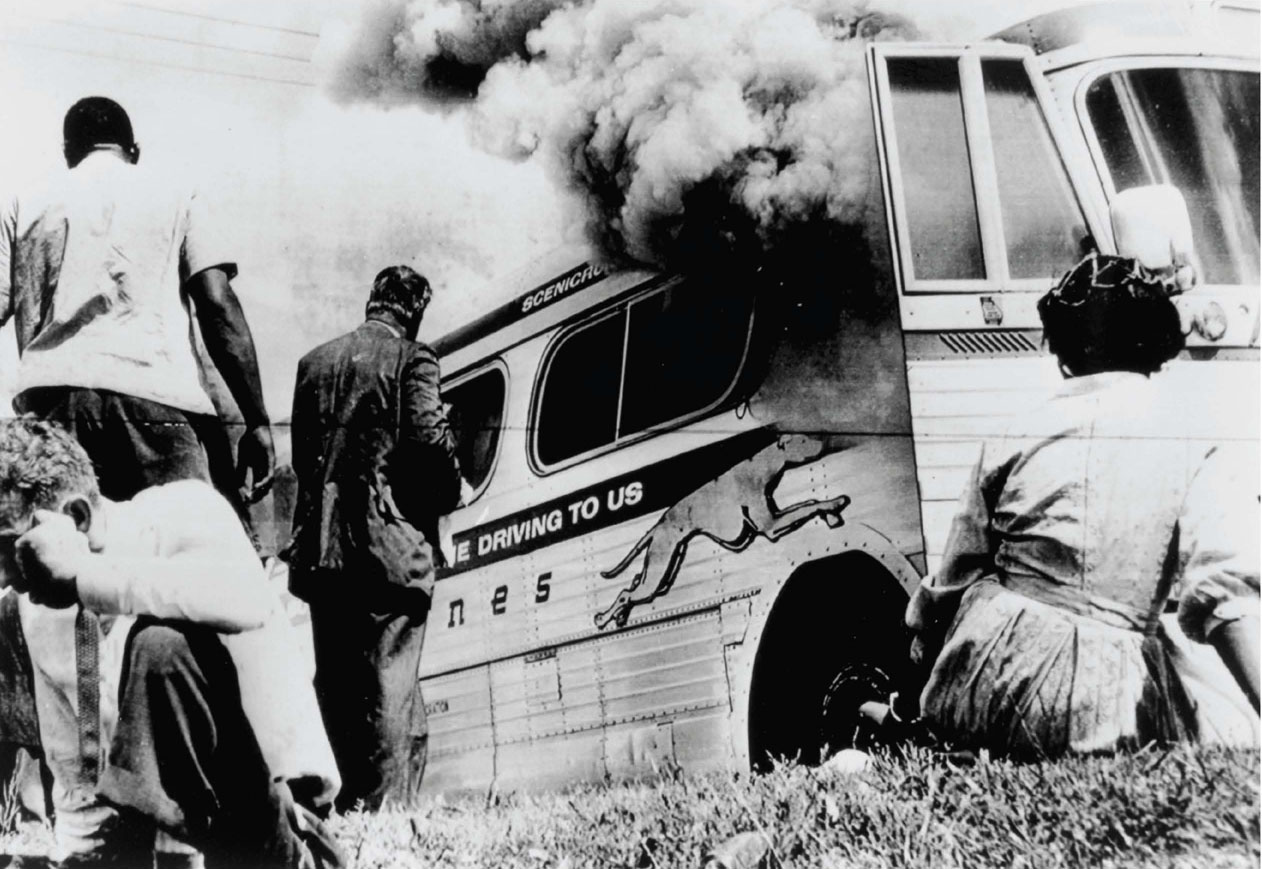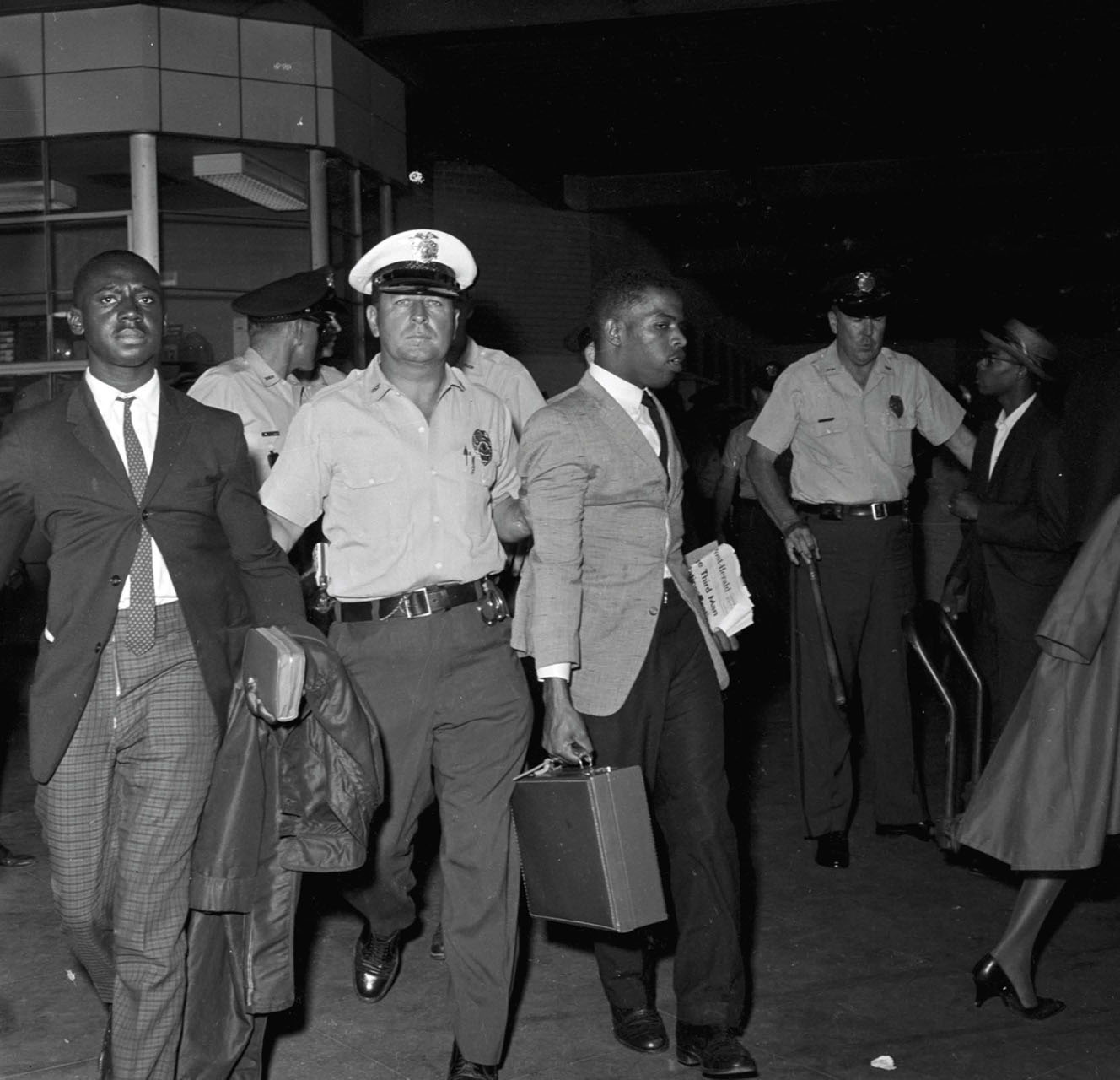1
FREEDOM RIDER
On May 4, 1961, 22-year-old John Lewis waited for a bus in Washington, D.C. He and 12 men and women, both black and white, would ride two buses to New Orleans, Louisiana. The riders would later be known as the Freedom Riders. Their goal was to break long-held practices of .
At bus stations, they would ignore Whites Only signs. They would sit together where they could. Doing this meant they risked being stopped, . If they faced violence, they would not return it.
the Freedom Riders review a map of a bus route
Two Lanes
For nearly 100 years, African Americans had experienced United States Supreme Court ruled against segregated seating on buses that traveled interstate. And in December 1960, they added bathrooms, waiting rooms, lunch counters, and any other facility associated with interstate travel to that ruling.
However, rulings were often ignored, especially in the southern United States. Many white Southerners refused to integrate, believing that people should be separated based on their skin color.
The riders passed quietly through Virginia. But in Charlotte, North Carolina, Joe Perkins asked for a shoeshine at a whites-only shoeshine chair. He was arrested, and the other riders had to continue on without him.
Six days into the trip, the bus stopped in Rock Hill, South Carolina. John was attacked as he tried to enter a whites-only waiting room. In Winnsboro, black Riders were arrested at a whites-only lunch counter.
The Freedom Riders escaped the bus, but many suffered from smoke inhalation.
On May 14, the buses passed through Anniston, Alabama. One was attacked on the road. Windows were smashed and tires were slashed. A firebomb was thrown on board. The bus caught fire. The Riders tried to escape, but the doors were blocked. Someone yelled, Burn them alive! When they ran off the bus, the attackers waited outside.
The second bus made it to the station. An angry mob boarded the bus and beat the passengers. The driver made it to Birmingham, Alabama, but the Riders were attacked there too. Jim Peck needed 53 stitches. Walter Bergman suffered permanent brain damage after being beaten.
Ticket to Ride
The 13 Freedom Riders were John Lewis, Joe Perkins, Jim Peck, Elton Cox, Walter Bergman, Frances Bergman, Jimmy McDonald, Charles Person, Ed Blankenheim, Genevieve Hughes, Albert Bigelow, Hank Thomas, and James Farmer. Farmer was the groups leader.
The Freedom Riders gathered in a church in Montgomery, Alabama, in 1961. John Lewis is in the front row, second from the right.
Even after everything that had happened, the Riders wanted to go on. Unfortunately, there was not a bus driver willing to take them. The Freedom Ride was delayed until May 17. John and Hank Thomas organized another group to travel from Nashville, Tennessee, to Birmingham.
When they reached Birmingham, police arrested them. That night, they were driven to the Tennessee border and left in the middle of nowhere. On foot and afraid, they got back to Birmingham and boarded a bus to Montgomery, Alabama. They were met by more violence there. John was hit over the head with a wooden crate.
Police arrested Charles Butler (left) and John (right) at the station in Birmingham.
On May 24 the Riders rode to Jackson, Mississippi, with an escort of National Guardsmen. Even so, they were arrested again. They were sent to a maximum security facility and spent 39 days in prison.
By this time, people all over the world had heard about the Freedom Riders and what they went through. In the fall of 1961 separate facilities based on race in bus and train terminals finally ended.
John had proven he was willing to risk everything for equality. But it was only the beginning of his battle.
DID YOU KNOW?
After Johns famous ride, more than 400 other volunteers from across 40 states joined the Freedom Riders. They trained for several days. They learned local and state laws regarding segregation and their rights as citizens. They also learned what they could legally do if their rights were denied.
2
EARLY YEARS
John Lewis was born in Troy, Alabama, on February 21, 1940. His parents, Eddie and Willie Mae, were poor farmers. They grew corn, peanuts, and cotton. John had nine brothers and sisters. Everyone had to help on the farm. When John was young, his main job was to take care of the chickens. He treated them like special pets. He would read the Bible, the familys only book, to them.
There was only one school for black children in Johns town. There were two rooms for all the students. There was no running water or indoor plumbing. In the winter John and his friends searched for sticks and branches to burn in the tiny stove. Everything in the school was homemade or bought by the community. On rainy days, the old bus they rode would get stuck in the mud. The students would have to get off and push it to school.
On the way to his school, Johns bus passed buses and schools for white children. The buses were shiny and traveled on paved roads. The whites-only schools were new and had playgrounds. John also noticed something else. We drove past prison work gangs almost every day, he said. The prisoners were always black. As were the folks working in the fields beyond them. You couldnt help but notice.
a segregated classroom, 1953
John could only go to school when there was no work to do. But he wanted to learn. Sometimes he would jump on the bus even though he knew he was needed at home.
When John was 11, he took a trip with his uncle to New York. Going from the segregated South to the He was shocked to see white and black people living in the same neighborhoods. This visit convinced John that people of different races couldand shouldlive, play, and study together.
children playing in Harlem, a neighborhood in New York City, in 1950
John wasnt the only one who thought this way. In the summer of 1954 the Supreme Court ruled on he said. An integrated school.
But things did not change in Alabama and in other southern states. The leaders of Johns state did not obey the Supreme Courts ruling. Life continued as it had beforesegregated.






















